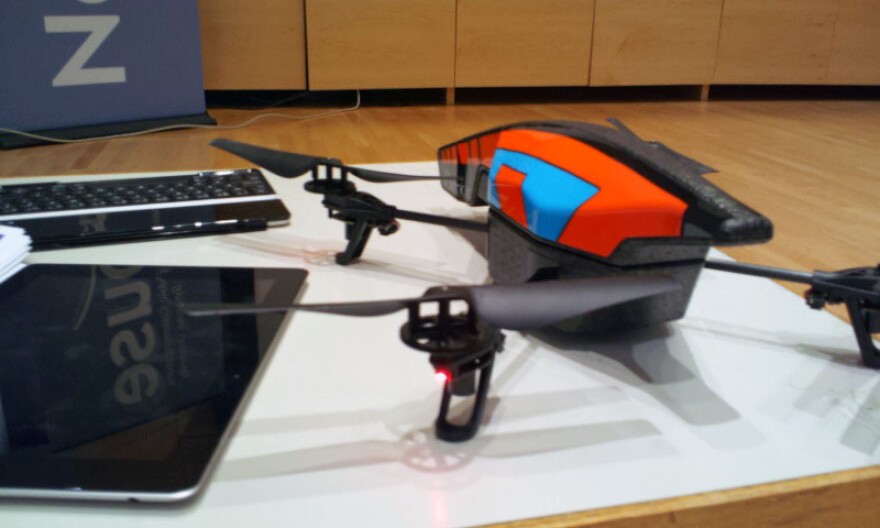Dan Pacheco is able to steer a small drone above a group of students with just a WiFi connection and his iPad. What the drone sees is projected onto a big screen in front of them.
This is just a demonstration that Pecheco, the recently named Chair of Journalism Innovation at Syracuse University, is doing to show the potential news-gathering uses of drones, or Unmanned Aerial Vehicles (UAVs).
Pacheco is flying a AR Parrot 2.0, which can be purchased on Amazon.com for $300. Compare that to the $700 or so it costs per hour to rent a helicopter.

The Parrot is equipped with two cameras that record video that be easily uploaded to the Web.
The low cost and convenience of using the Parrot - a souped-up remote control helicopter - could provide smaller news outlets with an accessible tool for getting pictures of events.
Drones being commonly used to gather news is still a ways off, but it is being experimented with. The University of Nebraska has a drone journalism lab; KBIA, an NPR member station in Missouri has launched a drone program; and CBS News' 60 Minutes program used one on assignment.
Pacheco stresses first there will be privacy - and ethical questions - that need to be answered.
"What’s the difference between a photographer going right up to someone’s face at a festival and taking a picture or a drone getting the same picture?" he asks. "It’s not fundamentally that different, it’s just one of them has wings."
Currently, the Federal Aviation Administration is developing guidelines for the commercial use of UAVs, which stretches beyond journalism, but any solid regulations are a few years away. The FAA estimates there could be upwards of 30,000 drones in U.S. skies by 2020.
In the meantime, Pacheco says it will take some adjustment as people get used to having drones flying above them at political rallies or other events. That will come he predicts.
The proliferation of drones raises concerns about privacy and what drones can and can't be used to film.
"There’s really no fundamental difference between you trespassing onto your neighbor’s property, pulling out your camera, getting up on your tippy toes, taking a picture of them coming out of the shower, or a drone flying over there and happening to get a picture of that," Pacheco says.
As part of a seminar series Pacheco has launched at the university, he's raffling off two drones just like his to students.



